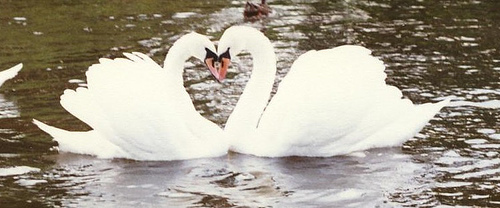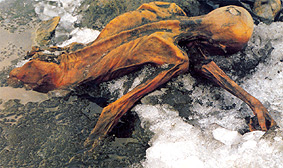
Found in a cave in Argentina, these handprints are at least 9,500 years old.
No one knows who made them, but their size suggests a 13-year-old boy.

Found in a cave in Argentina, these handprints are at least 9,500 years old.
No one knows who made them, but their size suggests a 13-year-old boy.
Here’s what English might look like if the Norman Conquest had failed:
To be, or not to be: that is the ask-thing:
is’t higher-thinking in the brain to bear
the slings and arrows of outrageous dooming
or to take weapons ‘gainst a sea of bothers
and by againstwork end them?
Author Paul Jennings composed this excerpt in 1966, 900 years after 1066. It uses words with Germanic roots in place of those with Greek, Latin, and Romance ones, which came to England with William the Conqueror. Jennings calls it “Anglish.”
In 2004, when vanity press PublishAmerica disdained science fiction and claimed to be a “traditional publisher,” the SF community decided to teach it a lesson. Dozens of authors collaborated on Atlanta Nights, a deliberate attempt to create the worst novel possible:
She went to the door, her hips swaying like palm trees in a Hawaiian hurricane.
Bruce lied there in the bed, trying to recover his memory. All he could remember was the screeching of tires’, like a steam engine gone crazy, and then there was just all that pain. Hell on wheels, that’s what it was, yeses.
Hell.
On wheels.
PublishAmerica took the bait, accepting the manuscript that December. When the authors revealed the hoax, the company retracted its acceptance, but the point was made. “The world is full of bad books written by amateurs,” wrote reviewer Teresa Nielsen Hayden. “Atlanta Nights is a bad book written by experts.”

Swans mate for life.
Insulting nicknames of U.S. presidents:
Beer consumption per capita, as of 2004, in liters per year:
Darwin, Australia, has the highest beer consumption of any city in the world. The average resident there drinks 230 liters, or about 60 gallons, of beer each year.

In August 1848, during a voyage to Saint Helena in the South Atlantic, the officers and crew of HMS Daedalus observed a creature 60 feet long that held a peculiar maned head above the water.
What was it? The English biologist Sir Richard Owen supposed it was an elephant seal; others have suggested a “super eel,” a giant squid, and an upside-down canoe. We’ll never know.

In 1991, a pair of German tourists discovered the frozen corpse of a Copper Age man in the Alps, where it had apparently lain undisturbed since 3,300 B.C. “Ötzi” had died in a fight, it seems: A CAT scan found an arrowhead in one shoulder, and he had bruises and cuts on his hands, wrists, and chest. DNA analysis also found blood from four other people on his gear.
If he was ornery in life, apparently his ghost was worse. In all, eight people connected with the iceman have died unexpectedly. In 1992, the head of the investigating forensic team died in a head-on collision. The mountaineer who led scientists to the body died in an avalanche. An Austrian journalist who covered the body’s removal died of a brain tumor, and the tourist who found it fell into a ravine on the mountain.
Have investigators unleashed a mysterious curse, like that of King Tutankhamen? “I think it’s a load of rubbish,” said the leading expert on the corpse, archaeologist Konrad Spindler. “It is all a media hype. The next thing you will be saying I will be next.”
He died in April 2005.
Nobel laureates by country, as of July 2006: